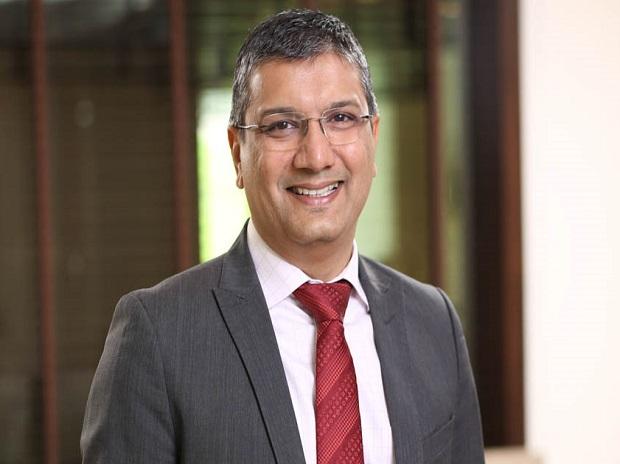[ad_1]
As we approach 2021, multiple Covid-19 vaccines are ready and being rolled out – this is much earlier than expected as governments have relaxed approval timelines. India is one of the largest suppliers to the world and is likely to have good quantities of vaccines available in the next two quarters. India’s case rates and fatalities are reducing in any case. This has helped most parts of the country ease or remove restrictions on movement. Economic activity is bouncing back better than what was feared a few months ago, led by a strong rural demand base.
Globally, due to the massive fiscal and monetary measures, developed economies are bouncing back fast. While the recovery rate for the services sector is slower (due to restricted movements and social distancing), real estate and manufacturing segments are growing well, and trade is accelerating. Global GDP gross domestic product (GDP) is expected to grow by 5 per cent in 2021 against a contraction of 4 per cent in 2020.
India will grow at 10 per cent in FY22, compared to a contraction of 8 per cent in FY21. However, even after this growth, we would have lost one year of growth — FY22 GDP will be 8 per cent below the pre-Covid trend. We don’t see much upside to the numbers above as the fiscal support in India has been only about 2 per cent, compared with 6-10 per cent in the western world.
The US Fed and other central banks will continue with relaxed monetary conditions and near-zero interest rates all through 2021 and most likely in 2022 too. As liquidity flows out, emerging markets are seeing acceleration in equity and debt flows from global investors. Most asset allocators expect emerging market currencies and equities to do well in 2021.
Transitioning from revive to thrive
The government has been surprisingly frugal in spending during the first half of the current financial year. We expect a sharp pick-up in the second half (30 per cent on a year-on-year basis) as the government has maintained its full-year spending targets. We believe that foreign investors and international rating agencies this year will ‘look through’ the slippages on fiscal deficit.
While fiscal support has been limited, the Reserve Bank of India (RBI) has done a lot of the heavy lifting, supported by flows from foreign institutional investors (FIIs). Interest rates have fallen, and liquidity is ample in the Indian financial system. Transmission of lower rates is now seen in lower lending rates. This will aid private sector investments, real estate construction and consumption. However, inflation is a lurking concern, with food and oil prices creeping up, and there also are fiscal limitations. However, there is enough ammunition with the RBI to keep rates low in spite of inflation concerns, as global liquidity continues to be supportive of unconventional measures like long-term repo operations (LTRO) and yield-curve management. The RBI’s recent actions support this view. However, rates may not go much lower than current levels.
There have been multiple steps taken to kick-start investments, such as lower corporate tax of 15 per cent for investments made in next two years, production-linked incentives and labour and farm sector reforms to name a few. These will keep sentiments towards India positive and hopefully get the much-needed ‘animal spirits’ back in the private sector.
Some of the risks and monitorables over the next year will be: first, a second COVID wave; second, non-performing asset (NPA) trends in the banking sector; third, restructuring; fourth, employment, which saw some deterioration in November after improving in June-October; fifth, inflation; and sixth, sustainability of demand traction in next few months after a good festive season, which saw pent-up demand and rural traction.
Budget
The Budget will be presented in February under trying conditions. Not much needs to be done on the direct and indirect tax fronts as rates are already reasonable and there is little scope for reduction when there is a general slowdown. Indirect taxes are under the GST council except for items like petroleum, tobacco, etc. Corporation tax incentive for investments made in the next two years still holds. Import duties are an area where there is some scope for tweaks.
Given the global Covid-linked situation, there is some leeway to increase the fiscal deficit for a year without spooking the financial markets and rating agencies. However, any ‘one-time’ increase will need to be backed up with a clear road map for rectifying the same in the next three years or so. We expect moderation in revenue expenditure and acceleration in capital expenditure.
There will be areas of focus like infrastructure, Aatmanirbhar Bharat, the banking sector and Covid-linked spending on the social sector such as health, housing and education. There may be more steps to incentivise infrastructure and investments by private sector. Higher focus on road, airports, railways, waterways and a clearer roadmap on the National Infrastructure Plan is likely. We also hope that more incentives be given for the real estate sector and home ownership. Real estate sector can provide a fillip to growth and employment in large numbers.
For Aatmanirbhar Bharat efforts, the production-linked incentive scheme will include more sectors and specific provisions may be made in the Budget. We may also see more items under higher import duties especially in components and consumer items to further push domestic manufacturing. There is likely to be higher defence spending with more requirement of domestic procurement.
There need to be clear funds earmarked for capitalisation of public-sector banks (PSBs). We hope that some path-breaking initiatives like a bad-bank can be pushed through for a quicker recovery of the sector. Without PSBs, accelerated credit growth will be difficult if the economy begins to grow faster. Another area where we hope more aggressive reforms to be pushed are in the power sector, where state electricity units are losing money, dragging the consolidated fiscal picture.
Given the sluggish economy, there will be much more reliance on non-tax revenues — dividend from RBI, divestment of stake in public-sector undertakings (PSUs) and telecom spectrum sale. However, we hope that the PSU divestments are made in an orderly fashion at better valuations than we have seen in the past couple of years.
Asset class views
For FY22, we expect over 20 per cent growth in earnings, given the lower base of FY21. So, for the markets, we start with global and local tailwinds as far as economy and liquidity are concerned, and investor sentiment is positive.
However, stock market valuations are stretched, as most asset classes have been performing with liquidity flows. Thus, returns may be in low double digits.
Fixed-income yields are likely to remain low, while there is not much scope to go lower. Hence, we may see a move towards corporate bonds and small savings schemes where yields are higher.
We expect commercial real estate in India to do well based on demand-supply dynamics and low interest rates. Gold will also be a good diversification or a hedge against a weak US Dollar. In conclusion, the stage is set for India as well as the world to transition from revive to thrive but getting the timing right will be of essence.
The author is director and chief investment officer at Max Life Insurance. Views expressed are personal
[ad_2]
Source link











